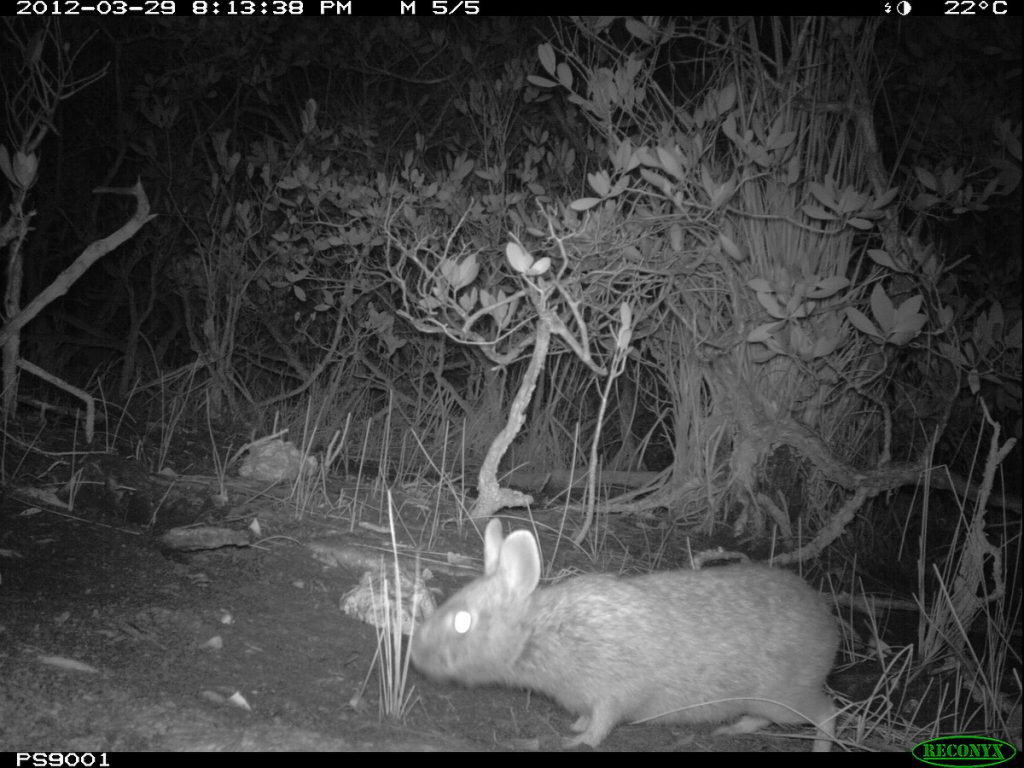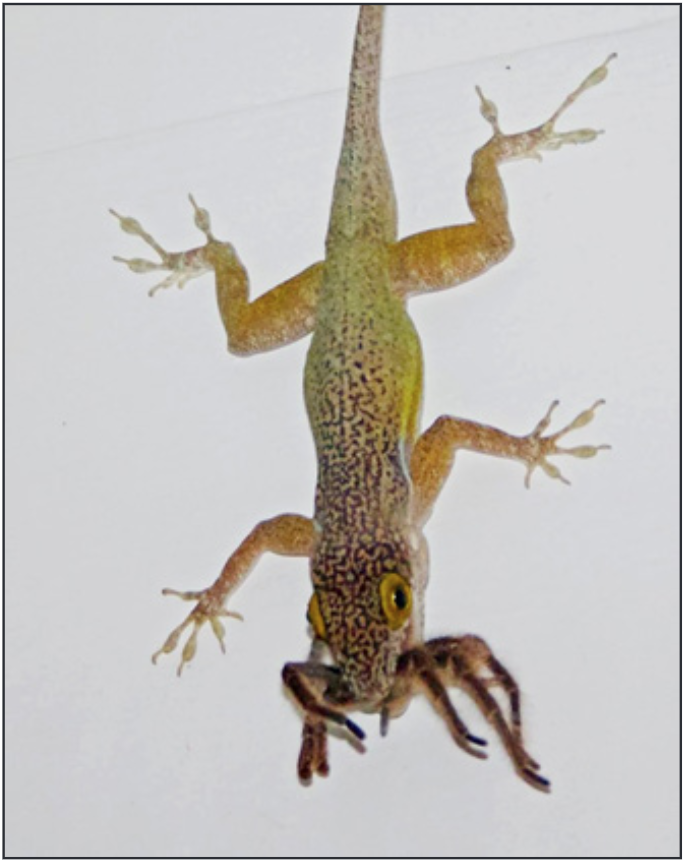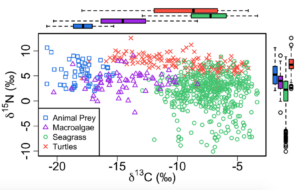Research beyond sea turtle ecology
Although I focus the vast majority of my time on sea turtles, ongoing collaborations have branched into questions concerning other systems and animal groups. The unifying goal for all of this work is to build an understanding of how species are responding in a changing world.
Endangered mammals —
In the Florida Keys, several endemic mammals face pressures from anthropogenic and environmental change. Dr. Michael Cove has developed a research program within this system that aims to aid the conservation of endangered small mammals, focusing on the Key Largo Woodrat, Key Largo Cotton Mouse, Lower Keys Marsh Rabbit, and Florida Key deer. Some of my formative research experiences were in the Florida Keys with Mike, and since starting to work together in 2013 we have published several articles documenting findings in this fascinating system in journals such as Frontiers in Ecology and the Environment and Landscape and Urban Planning (see Mike’s Google Scholar profile for additional publications).

Opportunistic lizards —

The Caribbean is host to an impressive example of adaptive radiation. Lizards in the genus Anolis inhabit islands throughout the region and have adapted to their local environments, resulting various cases of phenotypic divergence (i.e., developing different traits in different environments) and speciation.
There are two anole species in Antigua: Watts’ anole and Leach’s anole. During nightly sea turtle nesting surveys, we were surprised to observe these diurnal (active during the day) anole species making the most of nighttime foraging opportunities. We conducted a study of their nocturnal behaviors and published results in an article in Herpetological Conservation and Biology. This work was a collaboration with Dr. Chris Thawley, Alex Fireman, Dr. Sean Giery, and Dr. James Stroud. James and I also published a separate short note documenting nocturnal behavior in the Watts’ anole for the first time.
Conservation genetics —

The gene is in many ways the fundamental unit of ecology. This is especially true for sea turtle ecology, where DNA preserves demographic patterns that would otherwise be unobservable and unknown because of the highly migratory and cryptic nature of sea turtle life histories. In recognition of this reality, I have focused significant energy on conservation genetics. The best example of this came in 2020, when I coauthored a paper in Oecologia titled “Gridlock and beltways: the genetic context of urban invasions.” The paper was spearheaded by first author Dr. Emily Reed, a landscape genomicist, with two other coauthors: Dr. Megan Serr and Dr. Martha Burford Reiskind. Part of Figure 1 from our review is shown here, but I encourage you to read it for yourself!
Other research areas in marine ecology
Stable isotope ecology —
You are what you eat! Ecologists take advantage of this relationship by using stable isotopes as ecological tracers (more on this below). In my postdoctoral position I am working with global leaders in sea turtle stable isotope ecology to employ isotopes as spatial tracers, that is, to infer where animals move to/from. Normally, we have to use expensive tracking technology to do this, but stable isotopes can be a tool for inferring movements from just a low-cost, minimally invasive tissue sample.

Isotopes of a given element are very similar—they will have the same amount of protons but what differentiates them is their number of neutrons. For example, with carbon, we typically focus on the stable 13C and 12C isotopes, where 13C is heavier by one neutron. Stable isotopes of any element remain unchanged (i.e., do not decay) as they transition through sources and structures in nature. Sources can be things like plant and animal tissues, or even different water sources, among others. Beyond the stability of stable isotopes, what makes them especially useful is that different sources have unique rates of discrimination against heavy isotopes. In other words, distinct sources will tend to incorporate less of heavy isotopes, and do so at a consistent rate. This consistency can result in a unique ratio of heavy-to-light isotopes for the source, creating a unique signature that we can measure and trace. For instance, a seagrass species at a given location will have a fairly consistent ratio of 13C:12C (aka δ13C), and this ratio should be distinct from an algae species in the same area. Animals that eat these food sources will incorporate the carbon ratios into their tissues, informing our estimates of what they feed on. In this general way, the stable isotope ratios can be used to trace the flow of energy through food webs.